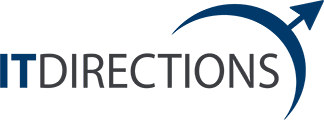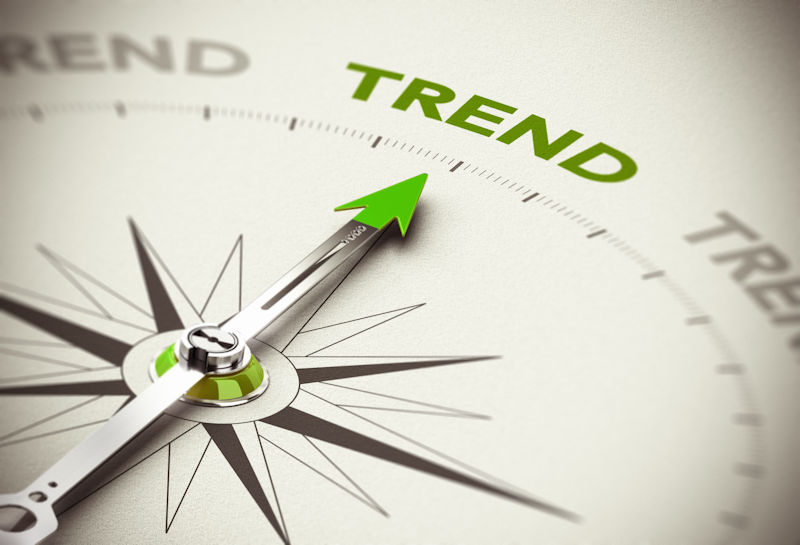I was recently asked, “What do you think are the top information technology trends impacting businesses in the next few years?” With rapid changes happening everywhere, there are a plethora of innovations coming into the mainstream; both industry-specific and by business function (e. g. 3-D printing revolutionizing manufacturing, Blockchain in financial and transaction models). I expect the following twelve disruptive trends to continue to shake the core of businesses in the future, impacting what is delivered, how it is delivered, why it is delivered, and who delivers it.
Trends Impacting WHAT Is Delivered
-
- Digital Business: The digital revolution is here, impacting every industry and redefining customer expectations. If you are not a digital disruptor or adapter, you will be a victim of it. Rather than merely a web site, digital technologies are transforming every aspect of businesses. Leading companies use digital from beginning to end; including product design, marketing, sales, customer life cycle, customer support, service, and community engagement. Rather than just using technologies and processes to increase productivity and reduce costs, industry leaders use digital technologies to improve customer service, increase revenue, and develop new services, products, and business models. Successful businesses have a comprehensive Digital Strategy, which is a business strategy identifying how to use digital technologies throughout all aspects of a business.
- Internet of Things (IoT) Connecting Everything: As stated by Harvard Business Review, IoT is a major transformational wave of innovation, with the previous transformational waves being mainframes & minicomputers, and the rise of the Internet. Internet connected devices with embedded sensors that provide actionable information will continue to increase at exponential rates. Platforms will connect smart machines and smart everything into a collaborative eco-system. Gartner Group refers to this as the “digital mesh”. As the installed base of IoT endpoints rapidly increase, Information Technology (IT) must integrate IoT endpoints, mobile devices, wearables, consumer devices, transportation devices, environmental devices, etc. with analytics and enterprise applications to provide meaningful insight into business processes and operations.
- Big Data, Data Analytics & Business Intelligence (BI): Innovators will harness huge amounts of data coming from everywhere and turn it into meaningful actionable information. The volume of information that businesses need to consume has quickly become overwhelming. The volume of data from a week can exceed the previous twenty years cumulative historical data. In addition to structured data, there will be a flood of mixed formats from heterogeneous sources including unstructured data, textual, audio, video, sensory, and contextual information. Data allows businesses to gain insights into customer behavior and help them understand how to differentiate themselves. Innovators will master the art of segregating valuable data and analysis from the noise. The power to collect, store, and analyze mass amounts of data in databases and data repositories on-the-fly will be critical. Harmonized data formats and understanding the meaning of the data will be necessary for businesses. Graphical depiction and visual representation of real-time information coupled with powerful tools with advanced calculations and machine learning will support agile decision-making.
- Artificial Intelligence (AI): Interconnected devices that learn and adapt will increase in sophistication. Intelligent systems will learn, predict, and adapt. AI systems will be everywhere, including the home, office, factory, and medical facility. Rules engines will provide real-time actions and increased intelligence based on incoming data rather than executing a pre-defined set of instructions. Robots and intelligent automation are replacing basic skills everywhere, including self-driving cars. Intelligent devices such as Amazon Alexa, Apple Siri, Google Now, Microsoft’s Cortana, and IBM’s Watson are becoming the foundation in how we operate at work and home.
Trends Impacting HOW It Is Delivered
-
- Cloud-Based & Scalable Applications with Infinite Infrastructure: In the past, IT assets were largely on premise. Today, a company needs to manage a hybrid environment with a combination of on premise and cloud-based assets operated by multiple providers. Cloud computing is increasing in importance as many organizations are aggressively moving functions to the cloud. It has been predicted that a third of all ERP systems in the world will migrate to the cloud in the next two years. While some companies use cloud platforms to save costs or improve continuity, the majority of the benefits are agility and the ability to quickly scale an environment on-demand.
- Mobile: Mobile continues to be a strong trend going forward and is quickly becoming engrained in our daily work and personal lives. Consumers expect to be able to communicate and do business with all companies via their smartphones, wearables, and tablets. With the number of mobile devices far outpacing the number of laptops and desktops, applications are more likely to be accessed via smartphones or mobile devices than a PC. As the sales of mobile devices increases, so does the scope and volume of mobile applications downloaded. Companies in all industries are using mobile to increase sales, customer engagement, and loyalty. This technology supports an increasingly transient workforce and mobile customer. Expect to see mobile devices coupled with smart devices and IoT in all industries and functions.
- Security: Platforms and architectures must evolve to address advanced security challenges in digital, mobile, IoT, and other areas. Security cannot be an after-thought and must be designed at the beginning of the solution design phase and adapted as threats advance. High-profile security breaches and cyber attacks demonstrate how exposure can have a significant impact on a company’s brand and bottom line. Innovating companies recognize security is a top challenge and area for investment and innovation into the future.
- Business Application Ecosystem: In the past, many IT departments would attempt to simplify their environment by selecting a single-vendor approach (e.g. implementing SAP or Oracle for a majority of their application portfolio). This singular environment is getting increasingly difficult to pursue, as niche solutions explode everywhere in the enterprise. IT needs to work with multi-vendors and a variety of technologies, with everything more connected and interoperable than the past. IT departments must mix & match software and hardware solutions, with master data management and integration of ecosystems being a key IT responsibility. API’s (Application Program Interfaces) and a solid architecture are critical to delivering modular, flexible, and dynamic solutions. Enterprise software is beginning to act and feel like consumer applications. The power of disruption lies within the overall technology-enabled capabilities a company can offer (e.g. Uber and Airbnb disrupted traditional industries with an orchestrated set of software solutions while not owning taxi’s or properties).
Trends Impacting WHY It Is Delivered
-
- The Informed Customer: There is a new type of customer who is well-versed and armed with information and options. Customers control the buying process and engage vendors later in the sales cycle. Increased data will provide insights for companies to be able to do more proactive marketing and sales efforts. Whether it’s patients coming to doctors or car buyers coming to dealerships, the customer is armed with specific and detailed information. Businesses can ensure they are adding value, ensuring the customer has accurate and complete information and self-service at their fingertips. Businesses must be transparent as aware and informed customers do business with companies that match their beliefs and values.
- Customer Focus and Obsession: Industries have evolved from a product-focus in the 1970’s, to a product and service focus in the 1990’s. In the 2000’s businesses became customer centric, and we are now relationship centric. This means an increase in consumption and on-demand models with flexible supply chains shifting as needed to meet customer demands. The total customer experience is as important as the product itself. The lines between partners in the supply chain are blurring and successful companies design a choreographed journey of value to best solve the needs of the customer. Companies are starting with the voice of the customer as the driver of innovation and working backward, rather than starting internally to determine their strategy. There is a shift to the subscription on-demand economy in virtually all industries so the customer can get and pay for the service when needed (e. g. Zipcar & Amazon Prime for clubs, Salesforce. com for software, TripAdvisor for Consumer Services, Kaplan for Education, Netflix for Video on Demand, Wall Street Journal for Media, BT for Telecom & Utility). Industry leaders own the customer and continue to delight the customer on a consistent basis.
Trends Impacting WHO Delivers It
-
- Emergent Shadow IT: With the consumerization of IT and the growth of the millennial generation, there is a shift in control & innovation from IT to the business. In the past, the IT organization were the masters of technology in an organization (e.g. the wizard behind the curtain), but today many individuals across the business are very comfortable using and even creating technology. With inexpensive downloadable applications, tools, and devices, business employees can instantly get their hands on the business tools they need instead of being thrown in the IT backlog pool. Rather than shutting down this innovation, IT must change their approach to use, interact with, collaborate with, and manage this valuable knowledge and expertise while ensuring assets and data are protected and used properly. IT must find the fulcrum between innovation & business outcomes while managing risks & security.
- Agile & Innovative: Nothing is static. The speed of business and technology evolution is accelerating. The life span of companies, ideas, solutions, strategic plans is all shrinking. Businesses need to innovate quickly or die. Technology initiatives that used to take years are now expected in months, or even less. In the past, it took an average of 20 years for Fortune 500 companies to reach a billion-dollar valuation, while today’s digital start-up companies are reaching that in four years. Businesses must be planning and adjusting as a continual process and culture of change with concise action plans rather than an annual event with a five-year outlook. The largest risk is doing nothing.
Summary
These twelve trends will demand more from IT departments and businesses than ever before. As part of the strategic planning process, companies must challenge their traditional business model and determine how to embrace and use these technology trends for success. How each company uses and approaches the latest trends are unique depending on the industry, customers, competitors, business situation, and company culture. What can be a home-run in one industry may be at par in another, or may even create collateral damage in others. Continuously re-think and innovate your business to be relevant and an industry leader in the new digital era.







